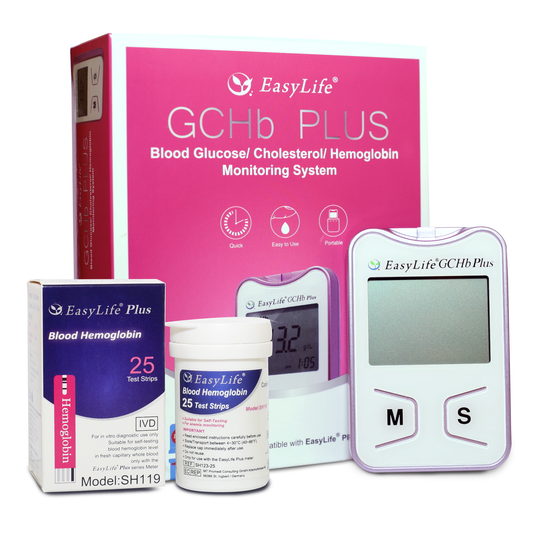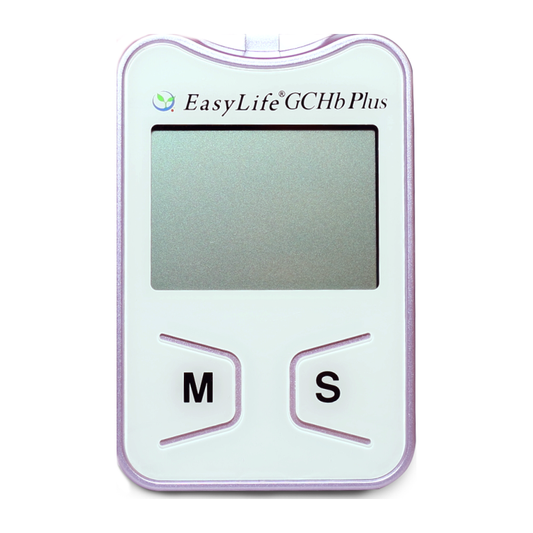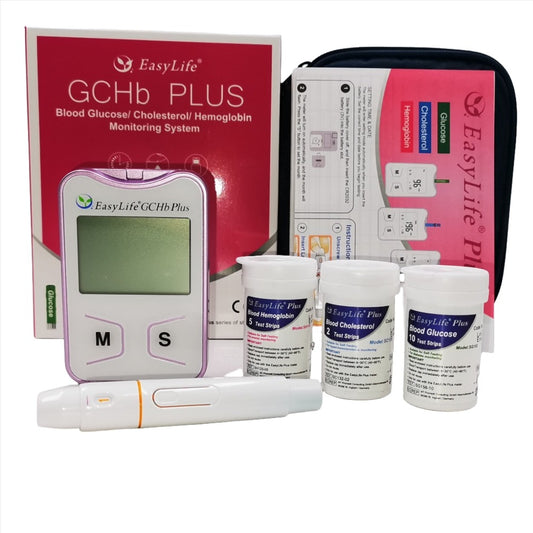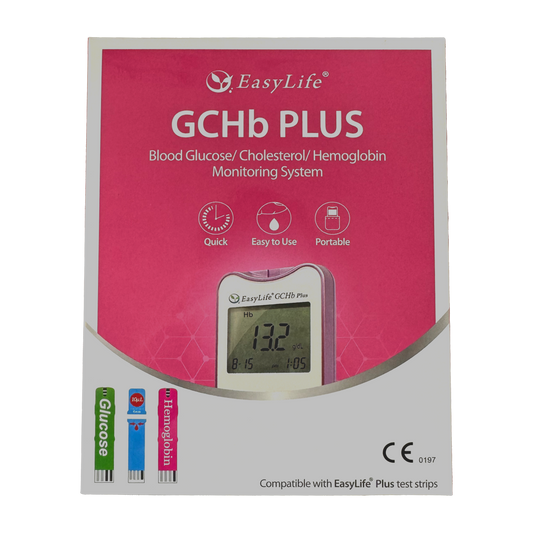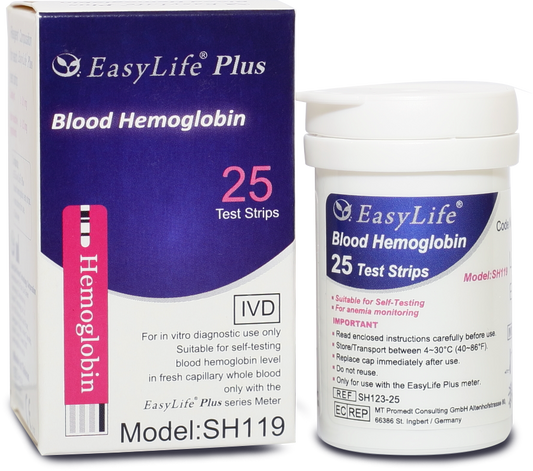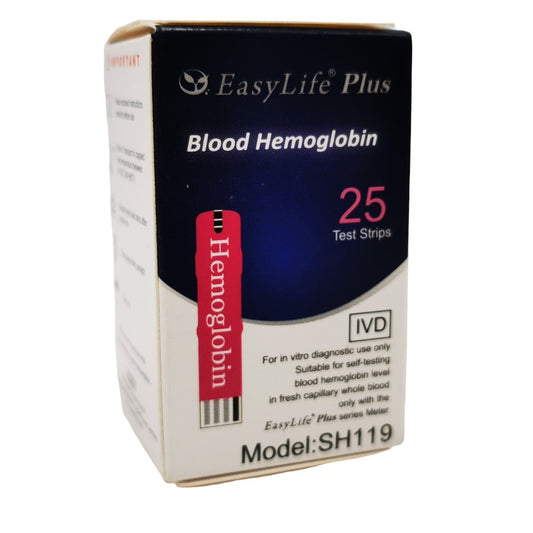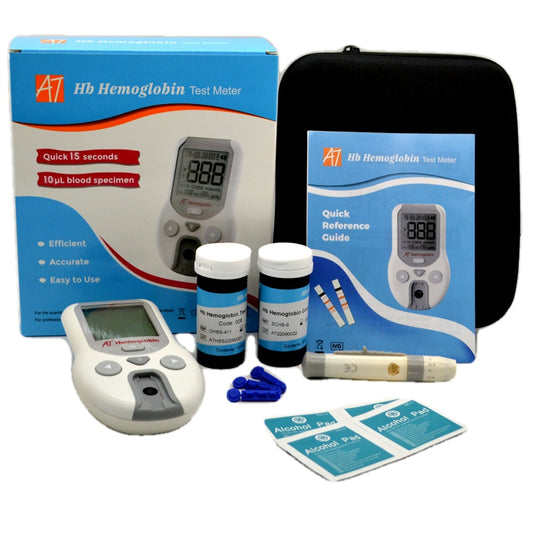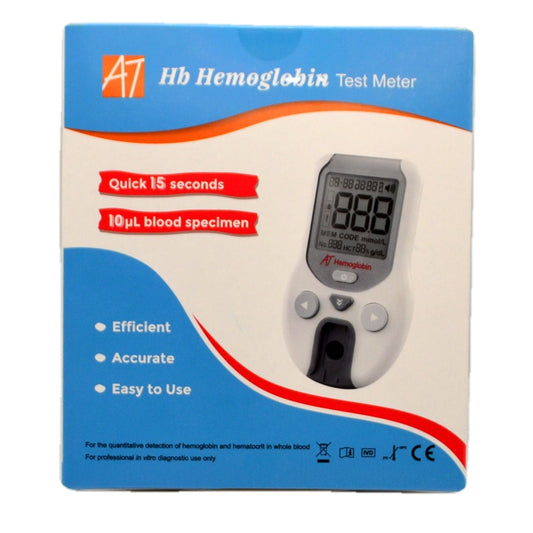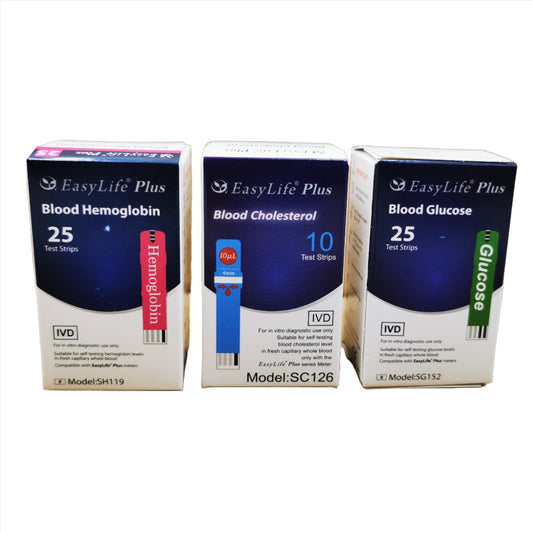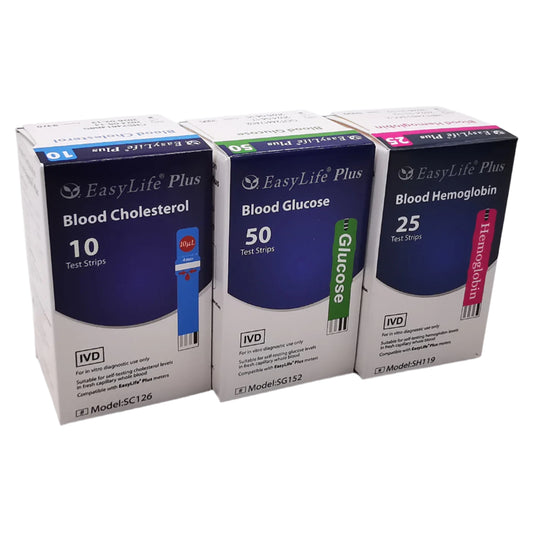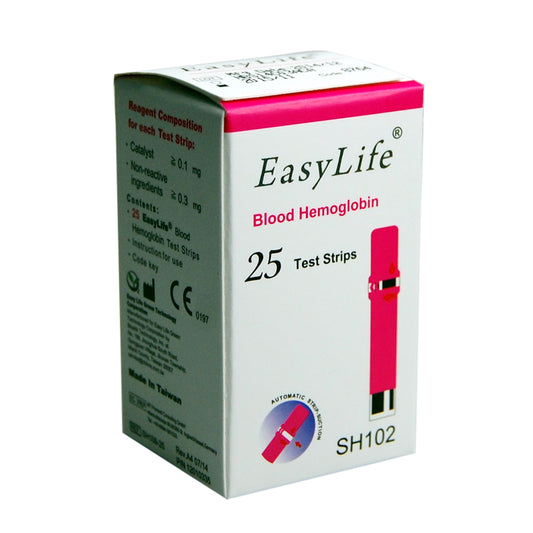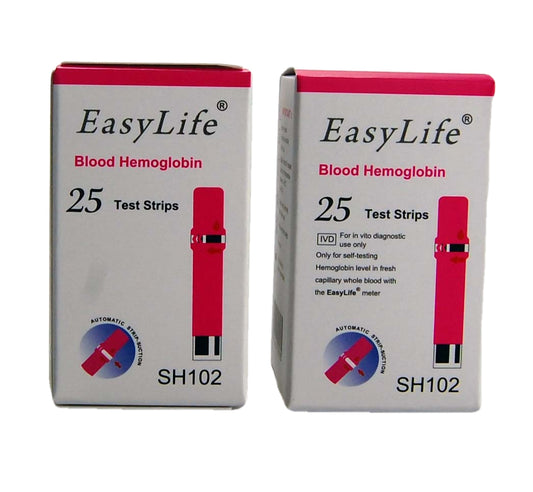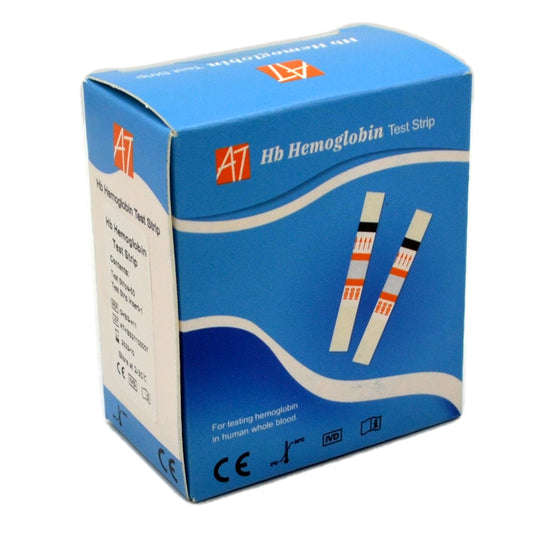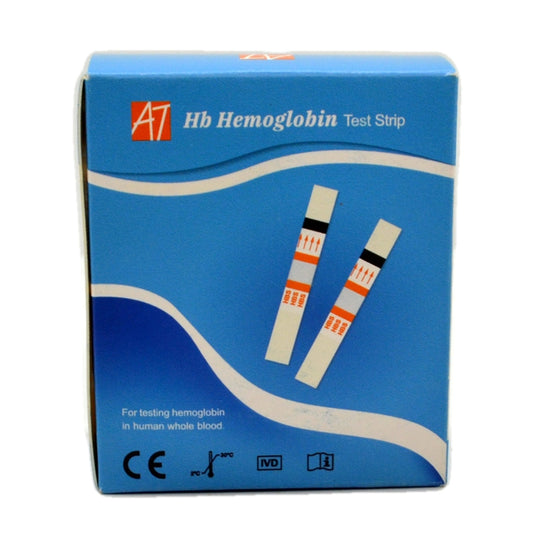Collection: Haemoglobin Meter and Test Strips
-
EASYLIFE Plus Blood Haemoglobin Anaemia Meter + 25 Easylife Plus Haemoglobin Test Strips + 25 Safety Lancets
4 reviewsRegular price £68.58 GBPRegular priceUnit price / per -
EASYLIFE GCHb PLUS Blood Glucose / Cholesterol / Haemoglobin Meter
5 reviewsRegular price From £49.99 GBPRegular priceUnit price / per -
EASYLIFE PLUS Blood Haemoglobin Test Strips
No reviewsRegular price From £18.59 GBPRegular priceUnit price / per£0.00 GBPSale price From £18.59 GBP -
ALLTEST Blood Haemoglobin & Haematocrit Meter
1 reviewRegular price £41.99 GBPRegular priceUnit price / per -
Easylife Test Strips Blood Glucose / Cholesterol / Haemoglobin Combination Pack
No reviewsRegular price £45.99 GBPRegular priceUnit price / per£48.13 GBPSale price £45.99 GBPSale -
EASYLIFE Legacy Blood Haemoglobin Strips
12 reviewsRegular price From £18.59 GBPRegular priceUnit price / per£0.00 GBPSale price From £18.59 GBP -
50 ALLTEST Blood Haemoglobin Strips + Pipettes
2 reviewsRegular price From £17.99 GBPRegular priceUnit price / per£0.00 GBPSale price From £17.99 GBP
Haemoglobin meters and haemoglobin test strips
Haemoglobin meters and test strips are important tools for monitoring and managing health conditions. They are commonly used in a variety of settings, including hospitals, clinics, and at home. They are easy to use and provide quick and accurate results.
Haemoglobin meters are handheld devices used to measure the amount of haemoglobin in the blood. Haemoglobin is a protein found in red blood cells that carries oxygen from the lungs to the rest of the body. It is an essential component of the blood, and its levels can be an indicator of overall health. A haemoglobin meter works by using a small sample of blood, typically obtained through a finger prick, and measuring the amount of haemoglobin in the sample. This information can then be used to determine the level of haemoglobin in the blood. Haemoglobin test strips are the strips that are used in the haemoglobin meters to measure haemoglobin levels.
One of the most common uses for haemoglobin meters and test strips is for monitoring haemoglobin levels in people with anaemia. Anaemia is a condition in which there are not enough red blood cells in the body, or the red blood cells do not have enough haemoglobin. This can cause fatigue, weakness, and other symptoms. Monitoring haemoglobin levels can help doctors determine the severity of the anaemia and develop a treatment plan. Haemoglobin meters and test strips are also used to monitor haemoglobin levels in people with other health conditions, such as sickle cell disease and thalassemia. These conditions can affect the production or structure of haemoglobin, which can lead to complications. Monitoring haemoglobin levels can help doctors detect these complications early and provide appropriate treatment. In addition to medical uses, haemoglobin meters can also be used by athletes to monitor their oxygen levels and performance. They can also be used by people who donate blood, to ensure that their haemoglobin levels are high enough to donate.
Please note :You can buy a haemoglobin meter or a combined haemoglobin / glucose / cholesterol meter and strips. All the haemoglobin meters require the correct haemoglobin test strips to work, and the test strips can not be used without the correct haemoglobin meter.
Haemoglobin meter FAQ's
How accurate is the hemoglobin meter?
The accuracy of a haemoglobin meter can vary depending on the specific device and its manufacturer. The hemoglobin meters that we stock are all designed to be accurate and reliable, but the precision can still be influenced by factors such as user error, proper calibration of the device, and the condition of the testing strips or cartridges used. It's crucial to follow the manufacturer's instructions carefully and ensure that the device is properly maintained and calibrated.
Accuracy can also be affected by factors like the presence of abnormal haemoglobin variants, certain medical conditions, or interference from substances in the blood. For clinical purposes, the accuracy of the device is often validated against laboratory measurements.
What interferes with haemoglobin measurement?
Several factors can interfere with the accurate measurement of hemoglobin levels. Here are some common factors to consider:
- Abnormal haemoglobin variants: Some individuals may have abnormal haemoglobin variants, such as haemoglobin S (associated with sickle cell disease) or haemoglobin C. These variants can affect the accuracy of measurements, and specialised testing methods may be required.
- Conditions affecting blood composition: Certain medical conditions, such as haemolytic anemias, can impact the composition of blood, leading to inaccurate haemoglobin measurements. Conditions that affect the size or shape of red blood cells can also interfere with measurements.
- Presence of other substances in blood: Substances like lipids, bilirubin, or high levels of certain proteins in the blood can interfere with haemoglobin measurements. These substances may lead to falsely elevated or depressed results.
- Dehydration or overhydration: Changes in blood volume due to dehydration or overhydration can affect the concentration of haemoglobin in the blood, potentially influencing measurement accuracy.
- Incorrect sample handling: Improper handling of blood samples, including issues with sample collection, storage, or transportation, can introduce errors in haemoglobin measurements.
- Interference from medications: Some medications may interfere with haemoglobin measurements. For example, high doses of vitamin C can affect certain haemoglobin assays.
- Device calibration and quality of testing strips: The accuracy of handheld haemoglobin meters depends on proper calibration and the quality of the testing strips or cartridges used. If these are not maintained according to the manufacturer's guidelines, or the haemoglobin test strips are expired or have been stored incorrectly, it can lead to inaccurate results.
- Patient factors: Individual variations among patients, such as age, sex, and certain health conditions plus the users ability to obtain a blood sample, may also impact hemoglobin measurements.

